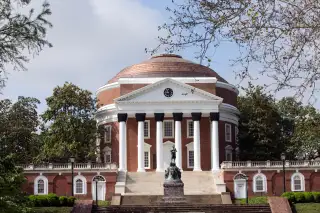Wait Listed at One of These Colleges? Better Have a Plan B

Almost 400,000 applicants are offered a spot on college wait lists each year, and while about a third of those who agree to stay on the lists eventually get admitted, the odds are much worse at many elite and popular colleges. One recent analysis found that the vast majority of 100 popular or elite colleges surveyed rejected more than 95% of wait-listed applicants. For most of those students, a wait list is just a nicer-sounding—and delayed—way of getting rejected.
To give this year's applicants an idea of their odds, Money contacted schools that have historically put thousands of students on their wait lists. Officials at some schools, such as the University of California, Davis, told us they are putting many qualified students on wait lists because of uncertainty about their budgets and the percentage of regularly admitted students who will actually enroll.
And some admissions officials explained how they choose the lucky few. San Diego State University, for example, has a strict ranking of wait-listed applicants, and makes offers from the top down. Others will select the wait list students that fill in gaps they perceive in the incoming freshman class, such as a shortage of students from certain parts of the country, or students interested in under-represented majors.
Money can also be a factor. At some schools, such as Carnegie Mellon, a student's need for financial aid can reduce the odds of admission from a wait list.
Many of the schools with the biggest wait lists—such as the University of Michigan, which had the nation's biggest wait list in 2014 with more than 12,000—declined to offer any explanation or advice.
To improve your odds on the toughest wait lists, experts recommend these six steps. Some schools also let you pursue second-chance transfers, appeal your admission decision, or look for other side door options.
Here is a list of colleges that have historically admitted fewer than 5% of students from their wait lists, despite having some of the largest wait lists in the country. Dashes (—) indicate that we were unable to obtain information.
| College | Number of students wait listed in 2014 | % of 2014 applicants who agreed to stay on the wait list and were accepted | Outlook for 2016 | Effect on financial aid |
|---|---|---|---|---|
| University of Michigan | 12,631 | 2% | — | — |
| Baylor University | 7,549 | 3% | — | — |
| University of California, Davis | 6,352 | 1% | About 9,000 applicants are on the wait list this year. Expects more admittees off of the wait list this year than in the past. | None, and need for aid doesn't affect acceptance. |
| Vanderbilt University | 6,018 | 5% | — | — |
| University of Virginia | 5,543 | 1% | Expects a larger wait list pool this year, but also a low acceptance rate. Wait-listed applicants only get in if there are spots available after May 1. | None, and need for aid doesn't affect acceptance. |
| University of Massachusetts Amherst | 5,228 | 2% | _ | _ |
| Rensselaer Polytechnic Institute | 4,984 | 3% | _ | _ |
| Carnegie Mellon University | 4,843 | 5% | 4,704 applicants were placed on the wait list this year. Acceptance rate is uncertain. | None, but need for aid may affect acceptance. |
| San Diego State University | 4,126 | 2% | Expects similar numbers for 2016. Wait-listed applicants are ranked and only the most qualified students will be accepted after May 1. | Need for aid doesn't affect acceptance. |
Sources: Peterson's, Money reporting